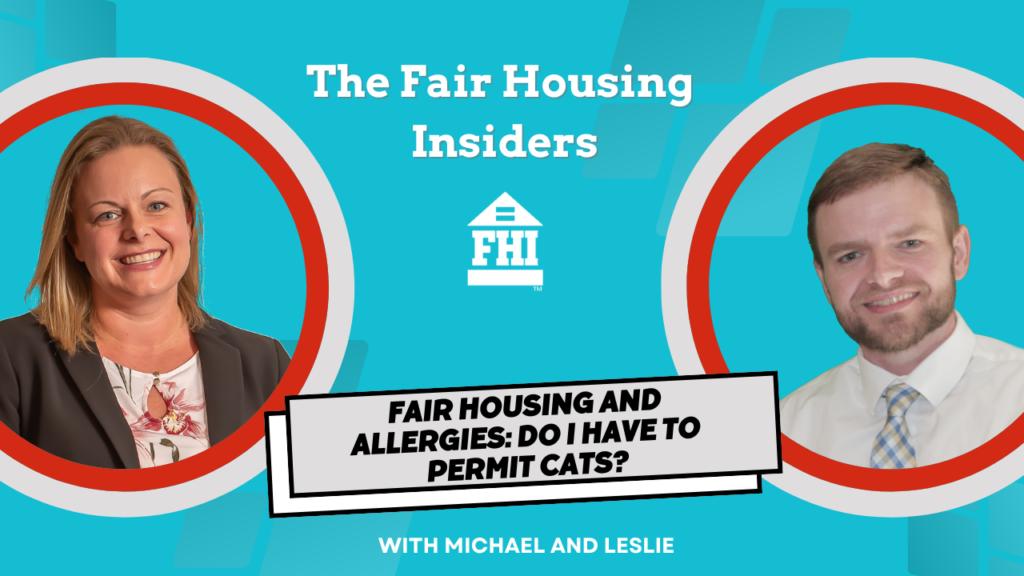In the world of property management, balancing resident needs while remaining compliant with fair housing laws can get complicated—especially when emotional support animals (ESAs) and allergies intersect. So, do you have to permit cats if another resident has allergies?

Table of Contents
Setting Pet Policies: What’s Within a Housing Provider’s Control?
Property managers generally have wide latitude in creating pet policies. You can allow or prohibit pets, restrict specific breeds or sizes, and even designate buildings as pet-friendly or pet-free. However, there’s one major exception: HUD-subsidized elderly housing must permit pets.
So, if a resident has a severe cat allergy, it makes sense for them to choose a no-pet building. A housing provider is not required to ban all cats across a community just to accommodate one resident’s allergy—similar to how a property that allows smoking wouldn’t be obligated to prohibit it due to one tenant’s sensitivity to smoke.
When Assistance Animals Enter the Picture
Even in communities with strict no-pet policies, housing providers are legally obligated to make reasonable accommodations for assistance animals, including ESAs. This is where things get tricky. A resident may move in expecting a cat-free environment, only to later discover that a neighbor has a verified ESA cat.
What happens when one resident’s need for an ESA conflicts with another’s medically documented allergy? According to the Fair Housing Act, a property manager cannot choose which disability takes priority. Instead, the goal must be to balance both residents’ needs fairly and reasonably.
Practical Steps for Property Managers
Here are a few actions property managers can take when faced with this dilemma:
- Facilitate mutual cooperation. Encourage both parties to work together. For example, request they avoid direct contact or shared areas where exposure may occur.
- Offer voluntary unit transfers. If the residents live near each other, ask (but do not require) one or both parties if they’d be open to switching units to increase separation.
Enforce common area policies. Ensure that assistance animals are only in common areas when there’s a verified disability-related reason to be there.
The Pitfall of Steering
While it may seem like a good idea to restrict assistance animals to specific floors or buildings to prevent conflicts, doing so constitutes illegal steering. This would limit a resident’s housing choices based on their disability—a clear violation of fair housing laws.
Offering flexibility, not restriction, is key. Housing providers can suggest alternatives, but the choice must remain with the resident.
The Takeaway
Managing competing reasonable accommodation requests—especially when they involve allergies and assistance animals—requires sensitivity, legal awareness, and clear communication. While there may not be a perfect fix, working cooperatively with all residents and staying up to date on fair housing training will go a long way in finding workable solutions.
You may also like:
- Holiday Guests, Assistance Animals, and Fair Housing—Are You Ready?
- Decorations, Parties & Compliance: Holiday Fair Housing Tips
- The Fair Housing Guide Part 2: Employee Responsibility Defined
- The Fair Housing Guide Part 1: Employee Expectations Explained
- Is Your Website Turning Renters Away? Website Accessibility in Property Management
